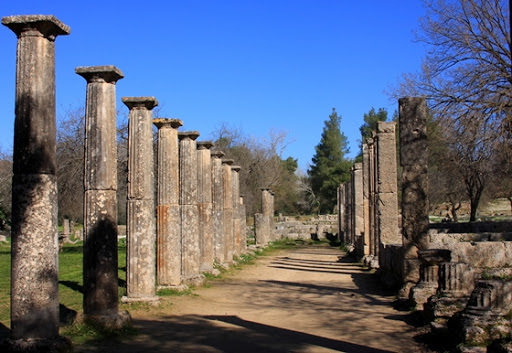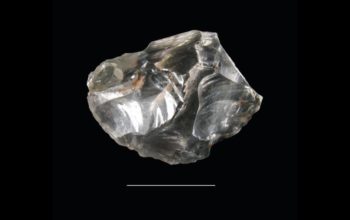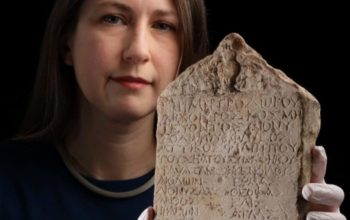An ancient small statue of a bronze bull poked his horns up after a heavy downpour near the ancient site of Olympia southern Greece
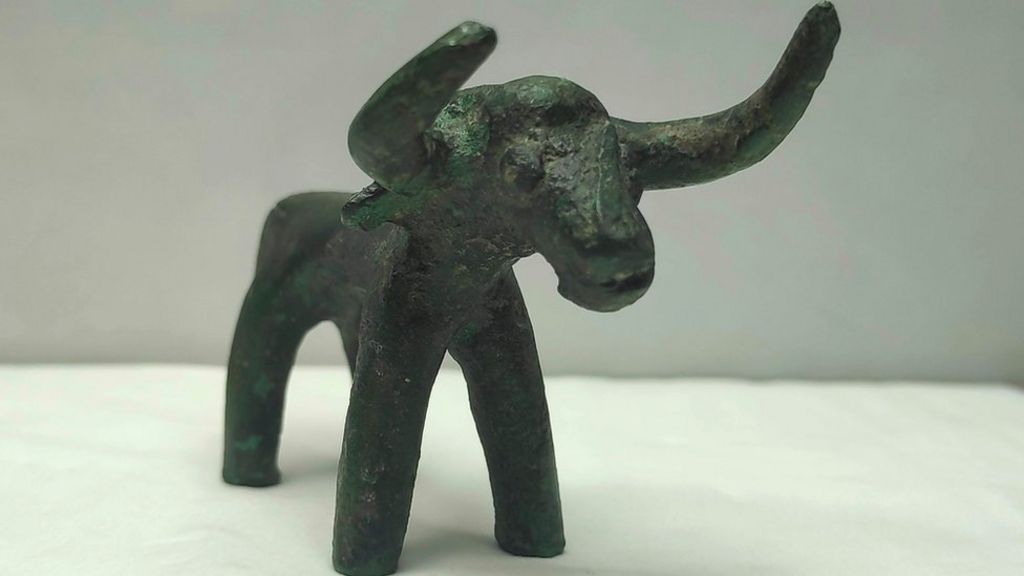
The following written content from other sources
A bronze figurine of a bull believed to be at least 2,500 years old has been unearthed in Greece following heavy rain near the ancient site of Olympia.
Burn marks on the statuette suggest it may have been one of thousands of offerings to the Greek god Zeus.
The discovery of the small, intact item was made by archaeologists near a temple, Greece’s culture ministry said.

An archaeologist spotted one of the bull’s horns sticking out of the mud after a downpour, it added.
The item was immediately transferred to a laboratory for examination.
Initial testing has indicated that the bull idol, which was found last month, dates from the Geometric period – about 1050BC to 700BC – of Greek art, the culture ministry said in a statement on Friday.
Animals such as bulls and horses are believed to have been worshipped over that period because of their importance for human survival.
Like other animal and human figurines, the bull discovered near the temple of Zeus was likely to have been offered by believers during a sacrifice, which would explain the burn marks and “sediments removed during its purification”, the ministry added. Read more from BBC
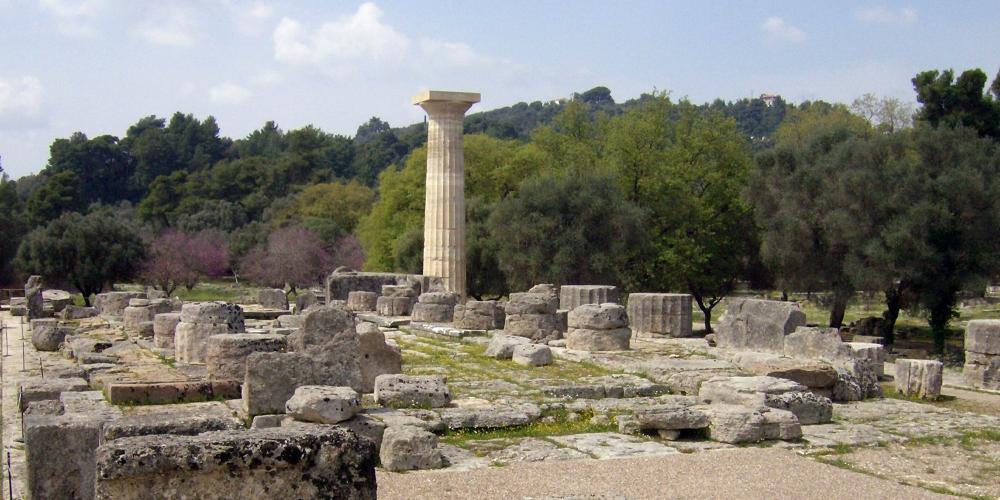
‘Chance discovery’ near the temple of Zeus was probably used as votive offering, Greek ministry says
Rain has helped uncover a small bull idol at ancient Olympia in what the Greek culture ministry said on Friday was a “chance discovery”.
It said the bronze idol, found intact, was spotted by an archaeologist at the sprawling ancient site that inspired the modern Olympic Games during a scheduled visit by ministry officials.

It was found near the temple of Zeus and the Altis, the sacred enclosure and core of the sanctuary, the ministry said. “One of its horns was poking out of the ground following recent heavy rainfall.”
In a preliminary evaluation, the idol has been dated to the Geometric period, about 1050-700BC. Burn marks suggest it was one of thousands of votive offerings to Zeus, the leading ancient Greek deity, the ministry said. Read more from Guardian

